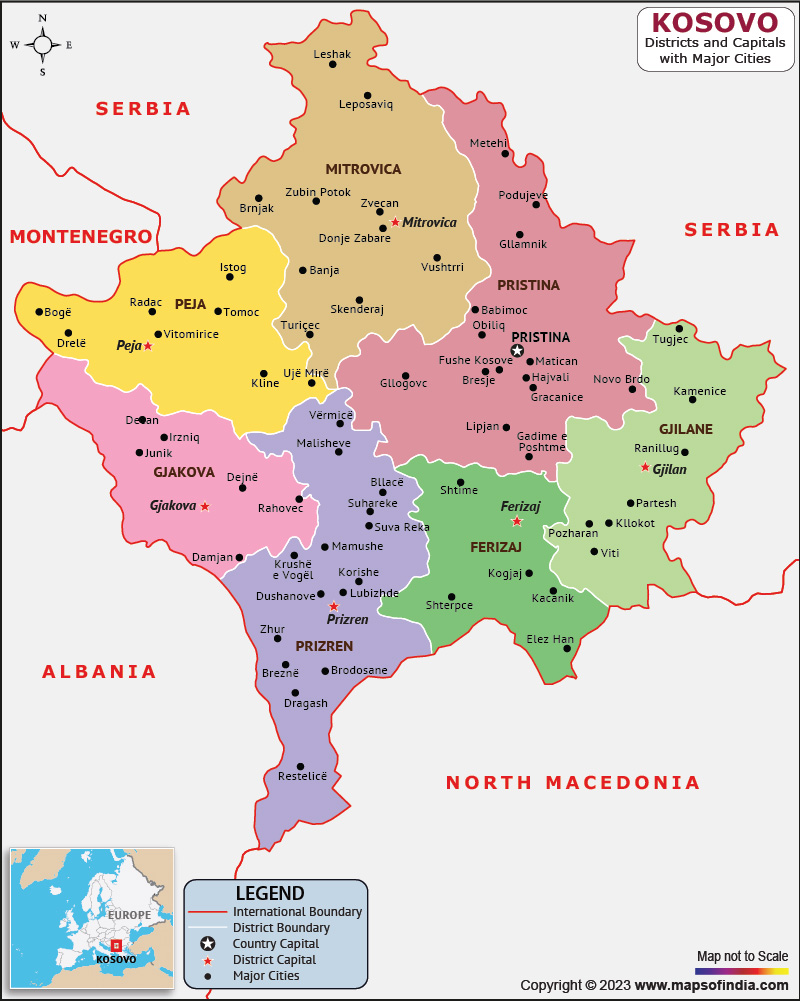Kosovo is a tiny landlocked nation positioned in southeastern Europe. It is well-known for its extensive heritage, ethnic variety, and breathtaking unique features. Pristina, the capital city of Kosovo, has a populace of about 1.8 million people.
History
The region was originally inhabited by Illyrians, who were later conquered by the Romans. In the Middle Ages, Kosovo became part of the Serbian Empire and remained under Serbian rule until the Ottoman Empire conquered it in the late 14th century. The Ottomans ruled Kosovo for more than 400 years until the late 19th century, when it was incorporated into Serbia.
During World War II, Kosovo was occupied by Nazi Germany and later became part of communist Yugoslavia after the war. Kosovo declared independence from Serbia in 2008, although Serbia does not recognize its independence.
Culture
Kosovo has a rich and diverse culture influenced by its history and geography. The majority of the population is ethnic Albanian, but there are also significant minority communities, including Serbs, Roma, Bosniaks, and Turks. Kosovo's culture is known for its hospitality, traditional music, dance, and food. Traditional Albanian clothing is still worn on special occasions, and traditional handicrafts such as embroidery, weaving, and wood carving are still practiced.
Language
The primary languages of Kosovo are Albanian and Serbian, although there are also significant minority languages spoken, including Bosnian, Turkish, and Romani.
Geography
Kosovo is a nation situated in the Southeastern portion of the European continent, bordered by Montenegro to the northwestern front, Albania to the southwestern front, North Macedonia to the southeastern front, and Serbia to the northern and eastern front. The country has a total area of 10,887 square kilometers and is dominated by mountain ranges, including the Albanian Alps in the west and the Šar Mountains in the south. The country has several major rivers, including the Drin, Ibar, and Sitnica.
| Official Name | Republic of Kosovo |
| Capital | Pristina |
| Population | 1806279 |
| Area | 10,887 km2 |
| Currency | Euro |
| Religion | Islam |
| Language | Albanian, Serbian |
| Major Cities | Pristina, Gjilan |
FAQs
Q1: What is the significance of the Kosovo War in the country's history?
The Kosovo War was a watershed moment in the country's history. In the late 1990s, it was a battle between the powers of the Federal Republic of Yugoslavia and the Kosovo Albanian rebel organisation known as the Kosovo Liberation Army (KLA).
Q2: What is the traditional food of Kosovo?
Kosovo has a rich culinary tradition that includes a variety of dishes influenced by Ottoman, Serbian, and Albanian cuisine.
Q3: What is the demographic makeup of Kosovo?
The majority of the population of Kosovo is ethnic Albanian, accounting for around 95% of the population. There are also significant minority communities, including Serbs, Roma, Bosniaks, and Turks.
Q4: What are some of the popular tourist destinations in Kosovo?
Kosovo has several popular tourist destinations, including the city of Pristina, which is known for its Ottoman-era architecture, museums, and galleries. The town of Prizren, located in the southwest of the country, is a popular destination for its historic Ottoman-era buildings and stunning views from the hilltop fortress.
Last Updated on: May 01, 2023
